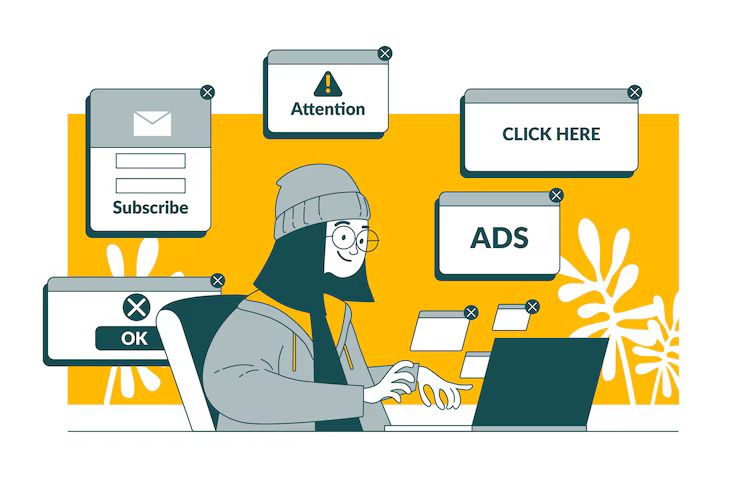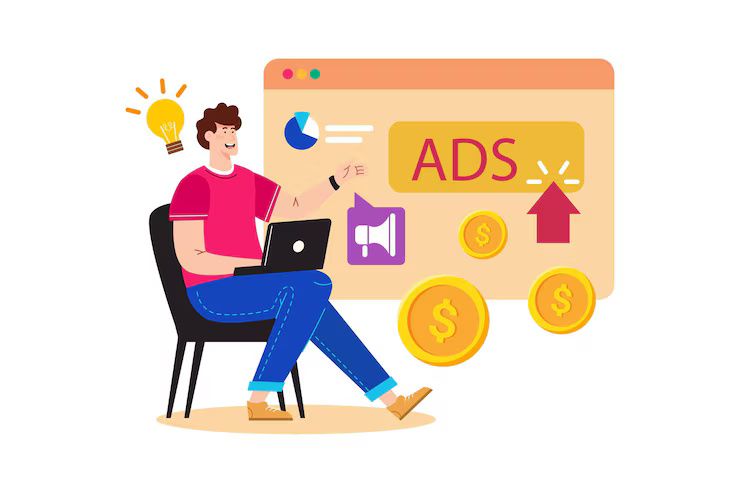Online advertising refers to the practice of promoting products, services, or content through digital platforms. It includes various formats such as search engine ads, display banners, video ads, sponsored social media posts, and native content placements.
This form of advertising exists to help businesses reach targeted audiences more effectively compared to traditional media. With billions of people using the internet daily, online ad options offer high flexibility, detailed audience targeting, and measurable results.

Why Online Advertising Is Relevant Today
Online advertising is important for several reasons:
-
Broad Reach: Digital ads allow businesses to reach global or local audiences instantly.
-
Targeting Capabilities: Platforms offer precise targeting based on age, location, behavior, or search intent.
-
Real-Time Performance Tracking: Advertisers can measure clicks, conversions, impressions, and ROI in real-time.
-
Cost Control: Campaigns can be adjusted anytime based on performance and budget.
-
Multi-Platform Access: Brands can advertise across mobile apps, websites, search engines, and social media.
These features benefit small businesses, large enterprises, content creators, and service providers by offering scalable advertising solutions with measurable outcomes.
Recent Developments in Online Advertising (2024–2025)
Over the past year, several notable trends and updates have shaped the digital advertising space:
-
AI-Driven Ads: Platforms like Google and Meta have introduced AI-based ad creation and optimization tools.
-
Privacy-Centric Advertising: Following cookie deprecation in Chrome (2024), advertisers have shifted to first-party data and contextual targeting.
-
Video Dominance: Short-form video ads on platforms like YouTube Shorts, Instagram Reels, and TikTok are outperforming static ads.
-
Programmatic Expansion: Automated ad buying using machine learning continues to grow, especially in real-time bidding (RTB) and connected TV (CTV).
-
Influencer and Native Advertising: There is increased integration of sponsored content into organic feeds and search results, making ads less disruptive.
These trends reflect the evolving nature of consumer behavior, platform algorithms, and global privacy regulations.
Legal Guidelines and Advertising Policies
Online ads are governed by both platform-specific policies and national advertising laws:
Platform Advertising Rules:
-
Google Ads: Prohibits misleading claims, requires transparency in financial services, and enforces content standards.
-
Meta (Facebook & Instagram): Ads must not contain personal attributes, unrealistic claims, or prohibited content.
-
YouTube Ads: Follows Google’s ad policy with added emphasis on family-safe content and age-restricted targeting.
Government Policies:
-
USA: Regulated by the Federal Trade Commission (FTC) for truth in advertising.
-
India: ASCI guidelines and IT Rules govern online content and promotional messaging.
-
EU: General Data Protection Regulation (GDPR) affects how user data is used in ad targeting.
Advertisers are encouraged to use disclaimers, respect user data privacy, and avoid exaggerated or manipulative ad copy to ensure compliance.
Tools and Resources for Effective Online Advertising
Here are useful platforms and tools to help manage, plan, and analyze digital ad campaigns:
Advertising Platforms:
-
Google Ads: For search, display, shopping, and YouTube campaigns.
-
Meta Ads Manager: Run ads across Facebook, Instagram, and Audience Network.
-
LinkedIn Ads: Ideal for B2B and industry-specific targeting.
-
Amazon Ads: Great for product-based ads with high buyer intent.
Analytics & Management:
-
Google Analytics: Track user behavior and campaign performance.
-
SEMrush / Ahrefs: Research keywords, competitors, and ad copy.
-
Canva / Adobe Express: Create banner and video ads with templates.
-
WordStream Advisor: Manage cross-platform campaigns with insights.
Budgeting Tools:
-
Meta Budget Calculator
-
Google Ads Keyword Planner
-
AdEspresso Budget Estimator
These tools help businesses of all sizes streamline ad planning, creative development, targeting, and optimization.
Frequently Asked Questions
Q1. What types of online ads are most effective?
Effectiveness depends on the goal. For conversions, search and retargeting ads work well. For brand awareness, video and display ads perform better.
Q2. Is online advertising expensive?
It can be cost-effective. With PPC (pay-per-click) models, you pay only when someone clicks. Budgets can start as low as ₹500 or $10 per day.
Q3. How do I measure ad performance?
Key metrics include click-through rate (CTR), cost per click (CPC), conversion rate, impressions, and return on ad spend (ROAS).
Q4. Can I advertise without a website?
Yes. Platforms like Facebook, Instagram, and Google allow promoting pages, phone calls, app installs, or WhatsApp chats without a website.
Q5. What is retargeting in online advertising?
Retargeting is a method of showing ads to users who have previously visited your site or interacted with your brand, helping increase conversions.
Final Thoughts
Exploring online ad options is essential for any individual or business looking to reach a modern, digitally engaged audience. From search engines to social platforms, the digital advertising landscape is rich with possibilities, but also requires strategic planning, creative testing, and compliance with evolving policies.
Understanding the tools, trends, and formats can help you choose the best ad types for your goals—whether you want to increase awareness, drive traffic, or generate sales.
